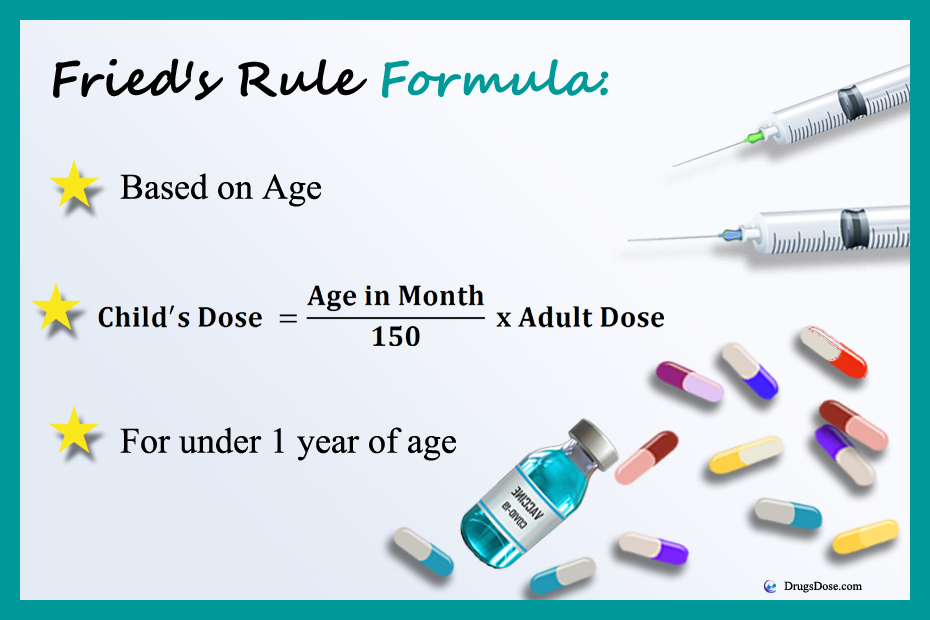Fried's Rule
(For under 1yr of age)
Fried’s Rule is another method used to calculate the correct dose of medication for the pediatric patient when given only the adult dose. Fried’s Rule is available to use to calculate an infant dosage for patients under 24 months when a proper dosage has not been already determined.
Fried’s (Solomon) rule = [age (months)/150] × adult dose
Example:
A physician orders diphenhydramine 50mg oral administration every six hours PRN for pediatric patient who admitted to the hospital. Calculate the dose for a four yr old child using Fried’s rule?
Answer:
The child is four years old, therefore, 4years*12months/1year= 48 months, then;
Pediatric dose= age (months)/150 × adult dose =48months*50mg/150months =2400mg/150=16mg of diphenhydramine.
Formula:
[age (months)/150] × adult dose
Fried’s rule is a method of estimating the dose of medication for a child by dividing the child’s age in months by 150 and multiplying the result by the adult dose.
General Tips:
- Check that your answer makes sense clinically.
- Triple check your work.
- Have a colleague or pharmacist check your work.
- Know general therapeutic drug doses for commonly administered medications.
